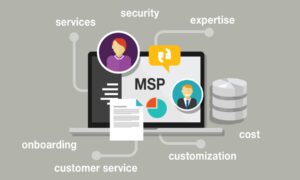The business landscape is evolving fast—and companies are under growing pressure to modernize legacy systems, streamline operations, and meet real-time demands.
Traditional ERP systems often fall short, prompting a widespread shift towards more agile and intelligent platforms.
One of the most significant moves in recent years is the rapid SAP S/4HANA adoption.
From Fortune 500 companies to mid-sized firms, businesses across industries are rethinking their ERP infrastructure—and SAP S/4HANA is at the center of this transformation.
This guide covers the key drivers of this adoption trend, major benefits of the platform, and what to expect in the future of ERP.
We’ll also touch on the support systems that make this journey smoother, like SAP Migration services and SAP AMS.
What Is SAP S/4HANA?-H2
SAP S/4HANA is the next-generation ERP suite from SAP, built on the in-memory HANA database. Unlike older SAP systems such as ECC, S/4HANA enables businesses to process vast volumes of data in real time.
The platform simplifies complex workflows, automates repetitive tasks, and provides integrated modules for finance, supply chain, sales, procurement, HR, and more—all under one central system.
It’s available in multiple deployment models, including on-premise, cloud, and hybrid. However, SAP S/4HANA cloud adoption has seen a sharp rise due to its flexibility, faster updates, and lower total cost of ownership.
Why Companies Are Moving from ECC to S/4HANA-H2
- End of Support for SAP ECC-H3
SAP has officially announced that maintenance support for ECC will end in 2027. This has created a firm deadline for companies to complete their SAP ERP migration to S/4HANA.
Waiting too long can result in rushed projects, resource shortages, and missed opportunities to build competitive advantages.
- Need for Real-Time Data and Analytics-H3
Older ERP systems lack real-time data processing. Businesses today need instant access to insights for better decision-making. S/4HANA’s in-memory architecture allows for lightning-fast reporting, dashboards, and forecasting.
- Complex System Landscapes-H3
Many organizations operate in silos, using multiple disconnected systems for different departments. S/4HANA helps unify operations under one ERP solution, reducing redundancies and improving cross-functional visibility.
- Increasing Cloud Adoption-H3
SAP S/4HANA cloud lets businesses benefit from scalability, automated updates, improved cybersecurity, and remote access—key factors in today’s hybrid and remote-first environments.
Key Benefits of SAP S/4HANA for Businesses-H2
- Simplified Data Model-H3
S/4HANA eliminates aggregate and index tables, reducing data redundancy. This makes the system leaner, faster, and easier to maintain.
- Real-Time Processing-H3
With in-memory computing, users can generate reports instantly—even across millions of records. This helps managers and teams make decisions based on current data, not yesterday’s numbers.
- Improved User Experience-H3
The SAP Fiori interface provides a modern, browser-based UI that’s intuitive and consistent across devices. It’s designed for ease of use, helping reduce training time and improve user productivity.
- Better Integration-H3
S/4HANA integrates easily with other SAP products, third-party apps, and tools like Salesforce, Microsoft Azure, and Google Cloud. Businesses gain a flexible IT landscape with fewer roadblocks.
- Advanced Automation-H3
AI, machine learning, and robotic process automation (RPA) are built into the platform. These tools help automate invoice processing, detect anomalies, and improve forecasting accuracy.
Trends Shaping SAP S/4HANA Adoption in 2025-H2
- Industry-Specific Deployments-H3
Companies aren’t just looking for a general ERP anymore. They want systems that understand their industry. SAP now offers pre-configured modules for sectors like retail, manufacturing, healthcare, and finance.
This speeds up implementation while ensuring compliance with industry standards.
- Rise of Clean Core Strategy-H3
Instead of heavily customizing ERP systems like in the past, businesses are now focusing on a “clean core” approach. They keep the SAP base as standard and push customizations to the BTP (Business Technology Platform) layer.
This ensures easier updates and better long-term system performance.
- More Focus on Sustainability Reporting-H3
Environmental, social, and governance (ESG) metrics are gaining importance. SAP S/4HANA includes features for tracking carbon footprint, supply chain compliance, and ESG audits—making it attractive for future-ready enterprises.
- Push Towards Intelligent Enterprise-H3
Modern businesses are aiming to become “intelligent enterprises” that operate with agility, automation, and advanced analytics. S/4HANA acts as the digital core that enables this transformation.
SAP ERP Migration: What to Expec-H2
Moving to S/4HANA is not a lift-and-shift project. It involves strategic planning and execution. Here’s a snapshot of what the SAP ERP migration process typically involves:
- Assessment & Planning-H3
Analyse current systems, identify gaps, and determine the right deployment model (cloud vs. on-premise).
- Data Cleanup-H3
Clean, validate, and prepare master data for migration to avoid errors and downtime.
- System Conversion-H3
Convert existing ECC system into S/4HANA using SAP tools like SUM (Software Update Manager) and DMO (Database Migration Option).
- Custom Code Adaptation-H3
Review and adapt any existing custom developments to align with the S/4HANA environment.
- Testing & Go-Live-H3
Conduct functional, integration, and user acceptance testing before moving to production.
A certified partner can help de-risk the process and ensure a smoother experience. If you’re planning your move, explore SAP Migration support options.
Role of SAP AMS in Supporting S/4HANA Post-Migration-H2
After the system goes live, ongoing support is essential. This is where SAP AMS (Application Managed Services) comes in.
Key benefits of SAP AMS include:-H3
- Proactive monitoring and issue resolution
- Regular updates and patch management
- Functional support for modules like finance, logistics, and HR
- Continuous optimisation based on business feedback
- Dedicated helpdesk and knowledge sharing
AMS ensures that your system runs efficiently and your team gets help when they need it.
Common Mistakes to Avoid During SAP S/4HANA Migration-H2
- Underestimating Complexity-H3
Migration involves more than just technical work—it’s also a business transformation. Overlooking user training or business process redesign can cause setbacks.
- Lack of Internal Buy-In-H3
Adoption works best when leadership and departments are aligned. Clear communication and stakeholder involvement are key.
- Over-Customising-H3
Avoid carrying over every legacy customisation. Stick with standard features unless there’s a strong business case for custom development.
- Ignoring Change Management-H3
Employees need support to adapt to the new system. Investing in proper training and change management reduces resistance and improves adoption.
Final Thoughts-H2
SAP S/4HANA adoption is a strategic move that prepares businesses for growth, agility, and innovation.
With built-in intelligence, improved user experiences, and seamless integration options, it’s no surprise that thousands of companies are accelerating their SAP ERP migration plans.
As the shift towards SAP S/4HANA cloud continues, choosing the right support—like SAP Migration and SAP AMS—can make the transition faster, smoother, and more valuable in the long run.

































